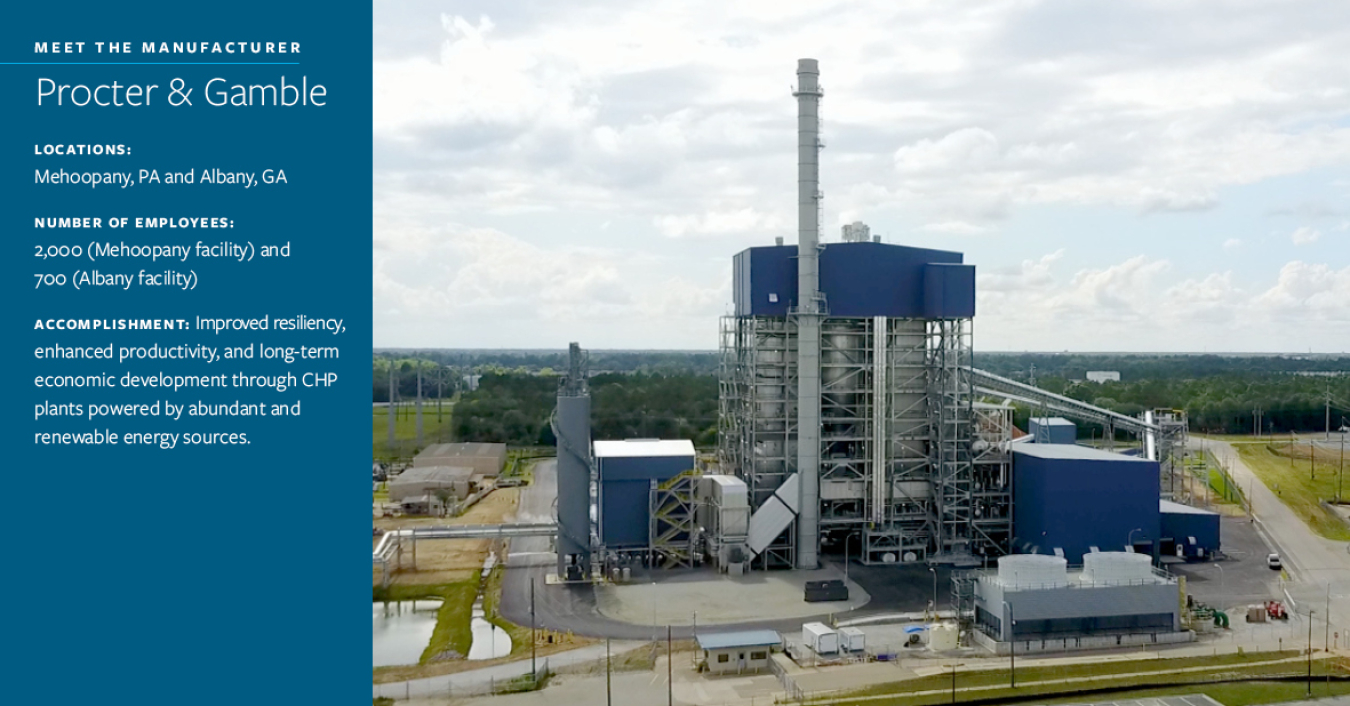
Image courtesy Constellation and Procter & Gamble
When Procter & Gamble (P&G), one of the world’s largest consumer goods companies, wanted to improve its resiliency at two major facilities, it turned to Combined Heat and Power (CHP), an efficient and clean approach to generating on-site electricity and useful thermal energy from a single fuel source. P&G built a 64-MW CHP plant at its Mehoopany, Pennsylvania facility powered by abundant onsite shale gas and hosted a 54-MW CHP plant at its Albany, Georgia facility powered by renewable biomass. Power from the Mehoopany plant runs all facility operations with extra electricity sold back to the grid while providing process steam and compressed natural gas for other local businesses. The Albany plant, owned and operated by Constellation, meets the facility’s thermal load with excess steam provided to nearby Marine Corps Logistics Base Albany. What’s more, these projects are launching points for continued collaboration between P&G and DOE’s regional CHP Technical Assistance Partnerships (TAPs) to evaluate more CHP opportunities in the context of energy resiliency and regional economic development.

